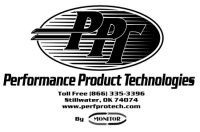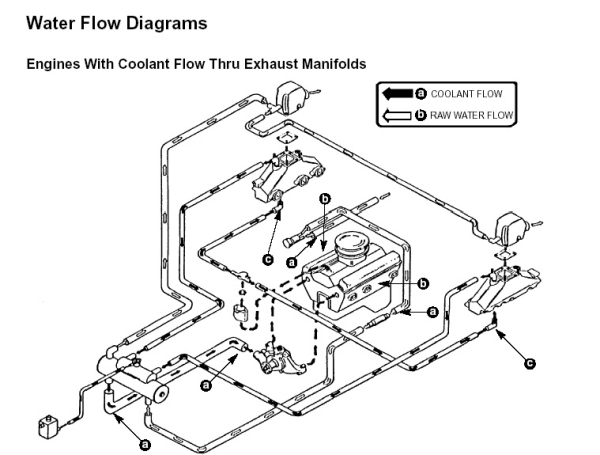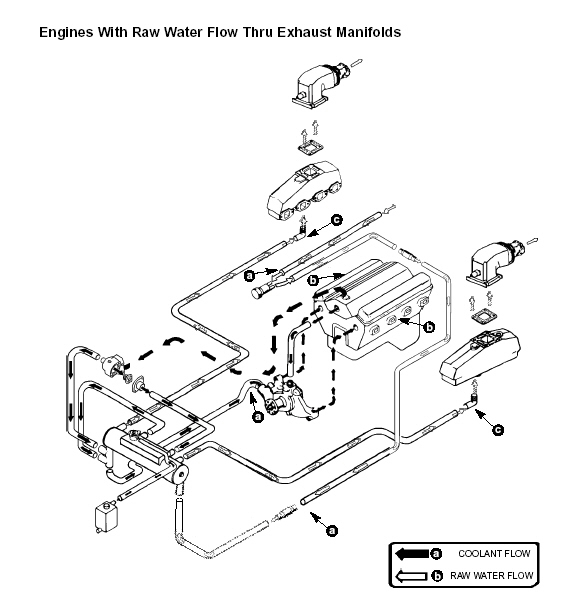
| Home | Announcements | Cooling Installation Tips | About Us | Track Shipment | Warranty |
The online order function is temporarily unavailable. Please contact us by phone at +1-604-291-9888 or by email at sales@hgemarine.com. Important Update on Tariff Impacts : Due to ongoing tariff challenges between countries, our prices may vary. Canadian imposed tariffs on certain items made in the USA. We are monitoring the current tariff situation closely, and will do our best to mitigate the impact on our customers. |
|||||
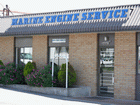
|
| H&H Marine Engine Service Ltd. (since 1968) |
Fresh Water Cooling
Fresh Water Cooling, Fresh Water Cooling Systems, Fresh Water Cooling Trouble Shooting, Fresh Water Cooling Tips
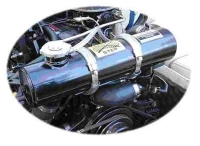
Quick Links Table (takes you directly to the various subject topics)
Topic: Fresh Water Cooling Question: What is Fresh Water Cooling and what is the Difference Between a Full & Half System?
Response: The term "Fresh Water Cooling" can be confusing as these systems circulate antifreeze and not water. Marine Fresh Water Cooling systems are similar to the cooling system in an automobile however rather than a radiator they utilize a heat exchanger, and rather than using air to remove the heat generated by the engine they use lake or ocean water. The heat exchangers are constructed by inserting a tube bundle of small tubes, maybe 150 or more, into a single large tube approximately 4" - 6" in diameter. The raw water pump on the engine flows sea water through the inside of the smaller tubes and makes passes back and forth across the unit while removing the heat from the engine before finally exiting and flowing out the exhaust system. The anti-freeze or "jacket water" flows up and down across the outside of the smaller tubes in one single pass as it dispels the heat load of the engine into the raw water. These systems are thought to be primarily reserved for people who operate in corrosive water conditions, however as you will see these systems have much more to offer than just corrosion protection. One of the main deficiencies of the standard "open" cooling systems is that they rely on a pressure balance for proper functioning. In extreme cases you can be introducing 40 degree water into the circulation loop that is attempting to regulate the engine at 160 degrees. This makes it near impossible for the engine to operate without some amount of cycling. Also with the onset of more stringent emissions regulations it is near impossible for the open systems to produce a stable enough operating condition that the engine spark and fuel mapping can be maximized.
Half Systems vs. Full Systems:
The 1/2 systems circulate glycol thru the engine block only, where as full systems circulate glycol thru the engine and exhaust manifolds. Generally speaking the advantage in a half system versus a full system is with performance applications. The reason for this being that performance engines generally reject more heat load to the heat exchanger and therefore the system functions better without the additional load of the exhaust. The other item to consider is that even with Fresh Water Cooling most boaters still choose to flush their system and drive unit and therefore the corrosion protection issues really aren't as relevant between the two systems as most consumers suspect. If you operate in corrosive water conditions and choose not to flush at all, your risers and sterndrive will experience corrosion even with the full system. Half systems do allow for easier installation as well as allowing for an overall more efficient system, while still protecting the main investment (the engine). The real issue to consider with a full system is the advantage of running warm exhaust manifolds. The newer engines being produced today are built with engine management systems that stabilize the idle rpm of the engine. This is done by varying the ignition timing of the engine. The problem with this involves the issue that having these ignition timing spikes tends to allow certain engine configurations to be more prevalent at drawing water back up through the exhaust system. This problem in combination with the condensation created by running "cold" exhaust manifolds sets up a situation that the full system is very good at preventing, this because the exhaust manifolds run at a temperature high enough to evaporate any collected moisture. Therefore we suggest making your determination between half and full systems based on these facts; performance vs normal application, carbureted vs EFI, cold water (below 70 degrees F) vs warm water operation, extended idle usage vs non extended periods of low rpm usage. Illustration 1 (Full System) See Diagram Below . Illustration 2 (Half System) See Diagram Below In either case we recommend using one of PPT's high capacity OEM type systems as they offer several inherent advantages versus standard aftermarket products. These advantages include:
- C12200 Copper Construction.
- High Capacity Tube Bundle (higher tube-count than standard).
- 6 Raw Water passes which yields higher water velocities, higher film coefficients, and therefore higher overall efficiencies.
- Knife edged dividers for reduced leakage.
- Dual Action Thermostat which allows maximized coolant flow during the entire engine operating range, regardless of thermostat position.
- Full flow coolant flow strategy which means thermostat bypassing is not utilized thereby ensuring full coolant flow thru the exhaust system as well as desirable operating temperatures when idling in cold water conditions.
- 160 Degree operating temperature for maximized spark & fueling by the engine management system.
In all cases prior to installing the system, you will want to flush out your block with tap water to prevent any loose debris from lodging into the heat exchanger once it is installed. Another helpful hint with older products is to create a pocket using a piece of "Panty Hose". Install this over the inlet of the heat exchanger (connection leading from the thermostat housing) before installing the coolant hose and hose clamp. Run the engine for about 30 minutes with straight tap water. This will act as a filter and collect the debris and scaling form the engine thereby preventing it from lodging in the heat exchanger which reduces it's overall effectiveness.
Fresh Water Cooling FULL System Flow Diagram
Fresh water Cooling Full System Flow Diagram Below
Fresh Water Cooling HALF System Flow Diagram Below
